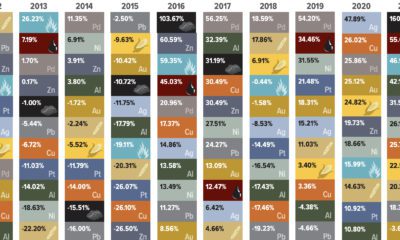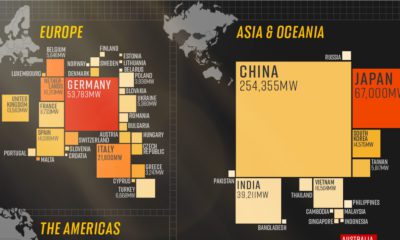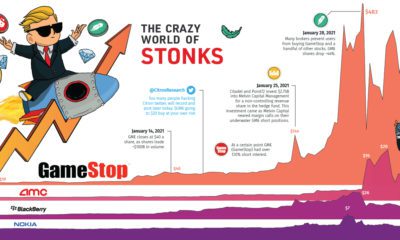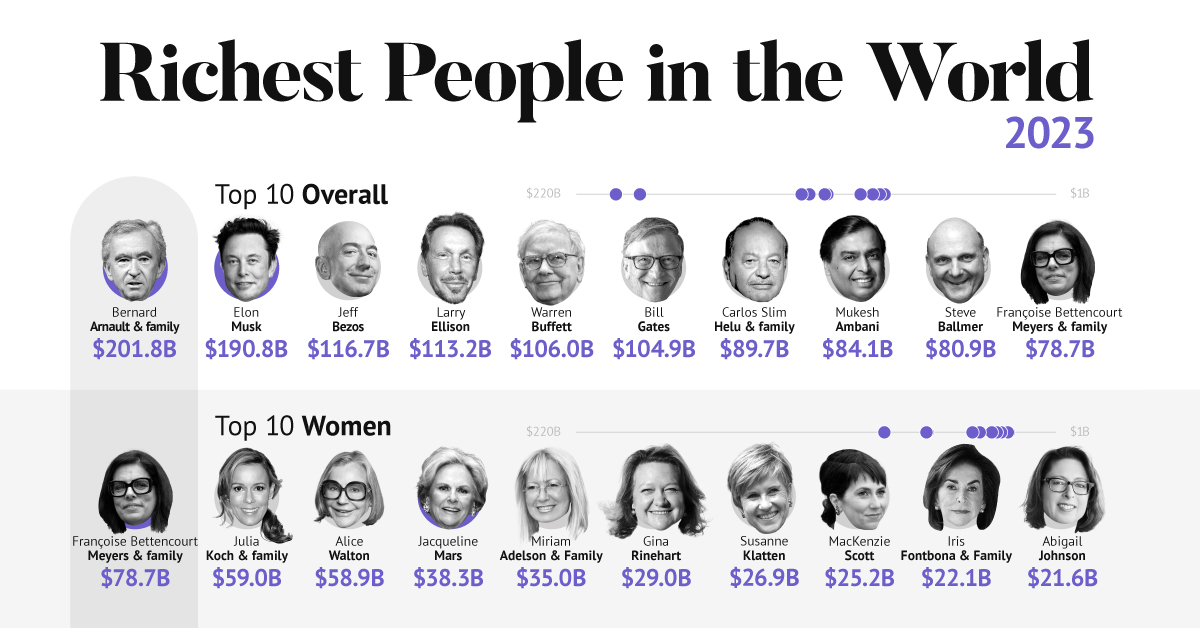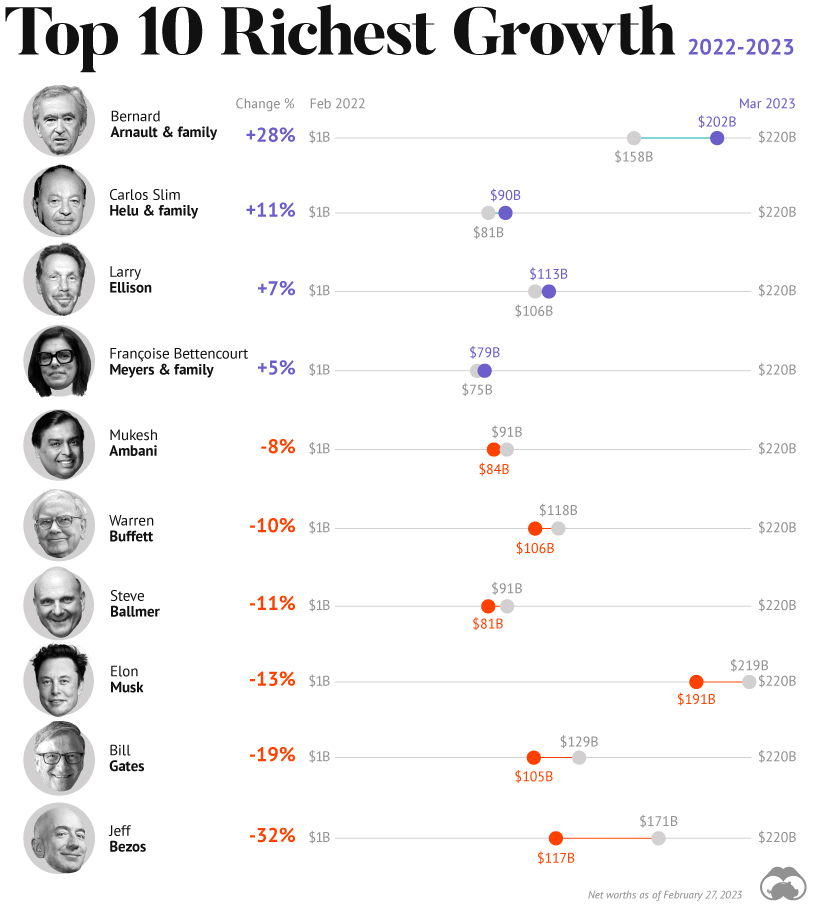Today’s infographic comes to us from New Pacific Metals and it takes a look at the bull markets in silver prices and the future of silver.
Silver Bulls: 1967 to Today
The late 1960s marked the beginning of the end for silver as currency, but also the start of its use in protecting and securing wealth.
In the United States, silver certificates were issued by the Treasury until late 1963, when the $1 Federal Reserve Note was released into circulation. After this, the remaining silver certificates were still redeemable for silver, but this practice ended in 1968.
Since then, silver has had several bull markets in which prices have increased—or as some silver aficionados may argue, the relative value of fiat currency has decreased.
Source: MacroTrends *Inflation-adjusted data using CPI from BLS, LBMA Monthly prices
That said, not all silver bull markets are the same, nor do they necessarily coincide with bull markets in the price of gold.
Performance: Gold vs. Silver
Despite being often referred to as “poor man’s gold”, silver has actually outperformed gold in five of the six previous bull markets for gold and silver. There are two ways to look at how silver prices performed during these timeframes: Often, gold prices move first with silver prices quickly following—but then, silver can outperform gold on its own timeline. Source: CPM Group (Nominal data) More recently, prices of silver have been on an upward trend since 2015 and some would say we are in a new bull market for the precious metal. For however longer, it is anyone’s guess.
The Future of Silver?
While the future price direction of silver is difficult to predict, this doesn’t diminish the increasing importance of silver’s role as a metal in an electrified future. As you can see in the demand breakdown below, silver is not only precious—it is useful: Source: Silver Institute While silver’s uses and applications continue to grow, silver remains a safe haven investment from political uncertainty and economic distress—all while being a cheaper and better alternative to gold. on A lagging stock market dented these fortunes against high interest rates, energy shocks, and economic uncertainty. But some of the world’s billionaires have flourished in this environment, posting sky-high revenues in spite of inflationary pressures. With data from Forbes Real-Time Billionaires List, we feature a snapshot of the richest people in the world in 2023.
Luxury Mogul Takes Top Spot
The world’s richest person is France’s Bernard Arnault, the chief executive of LVMH.
With 75 brands, the luxury conglomerate owns Louis Vuitton, Christian Dior, and Tiffany. LVMH traces back to 1985, when Arnault cut his first major deal with the company by acquiring Christian Dior, a firm that was struggling with bankruptcy.
Fast-forward to today, and the company is seeing record profits despite challenging market conditions. Louis Vuitton, for instance, has doubled its sales in four years.
In the table below, we show the world’s 10 richest people with data as of February 27, 2023:
Elon Musk, the second-wealthiest person in the world has a net worth of $191 billion. In October, Musk took over Twitter in a $44 billion dollar deal, which has drawn criticism from investors. Many say it’s a distraction from Musk’s work with Tesla.
While Tesla shares have rebounded—after falling roughly 70% in 2022—Musk’s wealth still sits about 13% lower than in March of last year.
Third on the list is Jeff Bezos, followed by Larry Ellison. The latter of the two, who founded Oracle, owns 98% of the Hawaiian island of Lanai which he bought in 2012 for $300 million.
Fifth on the list is Warren Buffett. In his annual letter to shareholders, he discussed how Berkshire Hathaway reported record operating profits despite economic headwinds. The company outperformed the S&P 500 Index by about 22% in 2022.
How Fortunes Have Changed
Given multiple economic crosscurrents, billionaire wealth has diverged over the last year. Since March 2022, just four of the top 10 richest in the world have seen their wealth increase. Two of these are European magnates, while Carlos Slim Helu runs the largest telecom firm in Latin America. In fact, a decade ago Slim was the richest person on the planet. Overall, as the tech sector saw dismal returns over the year, the top 10 tech billionaires lost almost $500 billion in combined wealth.
Recent Shakeups in Asia
Perhaps the most striking news for the world’s richest centers around Gautam Adani, formerly the richest person in Asia. In January, Hindenburg Research, a short-selling firm, released a report claiming that the Adani Group engaged in stock manipulation and fraud. Specifically, the alleged the firm used offshore accounts to launder money, artificially boost share prices, and hide losses. The Adani Group, which owns India’s largest ports—along with ports in Australia, Sri Lanka, and Israel—lost $100 billion in value in the span of a few weeks. Interestingly, very few Indian mutual funds hold significant shares in Adani Group, signaling a lack of confidence across India’s market, which was also cited in Hindenburg’s report. As a result, Mukesh Ambani has climbed to Asia’s top spot, controlling a $84 billion empire that spans from oil and gas and renewable energy to telecom. His conglomerate, Reliance Industries is the largest company by market cap in India.


